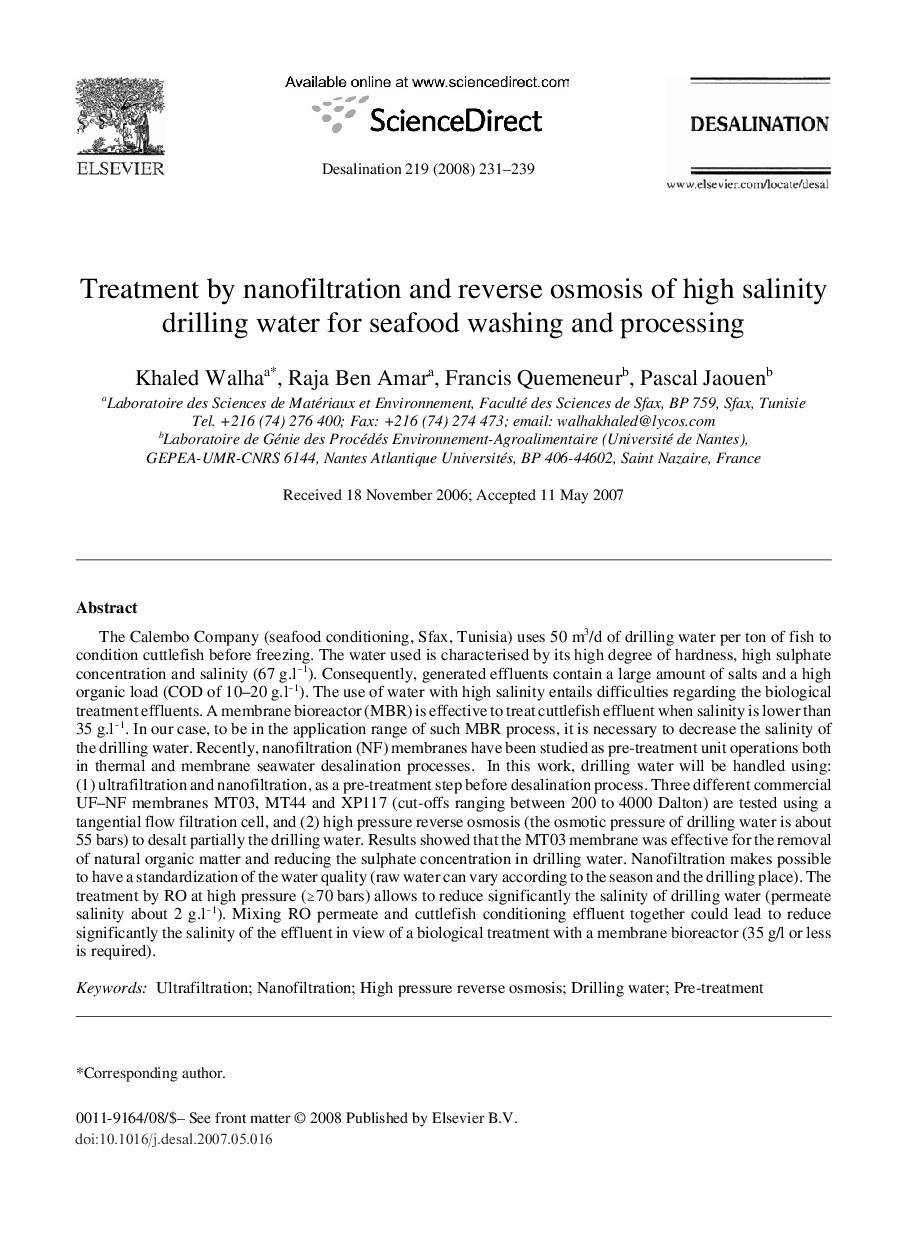| کد مقاله | کد نشریه | سال انتشار | مقاله انگلیسی | نسخه تمام متن |
|---|---|---|---|---|
| 627796 | 1455471 | 2008 | 9 صفحه PDF | دانلود رایگان |

The Calembo Company (seafood conditioning, Sfax, Tunisia) uses 50 m3/d of drilling water per ton of fish to condition cuttlefish before freezing. The water used is characterised by its high degree of hardness, high sulphate concentration and salinity (67 g.l−1). Consequently, generated effluents contain a large amount of salts and a high organic load (COD of 10–20 g.l−11). The use of water with high salinity entails difficulties regarding the biological treatment effluents. A membrane bioreactor (MBR) is effective to treat cuttlefish effluent when salinity is lower than 35 g.l−11. In our case, to be in the application range of such MBR process, it is necessary to decrease the salinity of the drilling water. Recently, nanofiltration (NF) membranes have been studied as pre-treatment unit operations both in thermal and membrane seawater desalination processes. In this work, drilling water will be handled using: (1) ultrafiltration and nanofiltration, as a pre-treatment step before desalination process. Three different commercial UF–NF membranes MT03, MT44 and XP117 (cut-offs ranging between 200 to 4000 Dalton) are tested using a tangential flow filtration cell, and (2) high pressure reverse osmosis (the osmotic pressure of drilling water is about 55 bars) to desalt partially the drilling water. Results showed that the MT03 membrane was effective for the removal of natural organic matter and reducing the sulphate concentration in drilling water. Nanofiltration makes possible to have a standardization of the water quality (raw water can vary according to the season and the drilling place). The treatment by RO at high pressure ($70 bars) allows to reduce significantly the salinity of drilling water (permeate salinity about 2 g.l−11). Mixing RO permeate and cuttlefish conditioning effluent together could lead to reduce significantly the salinity of the effluent in view of a biological treatment with a membrane bioreactor (35 g/l or less is required).
Journal: Desalination - Volume 219, Issues 1–3, 25 January 2008, Pages 231-239